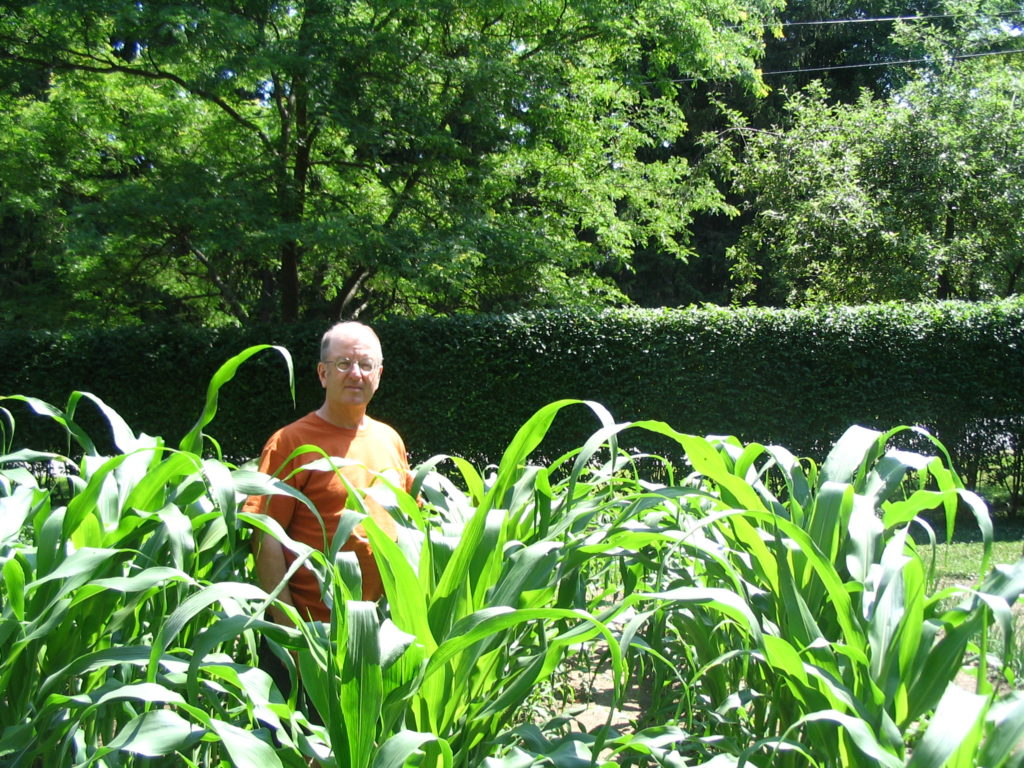Sweet corn and a sandwich: The complexities of an expanding regional cuisine
by Stephen Lewandowski –

The Finger Lakes region was colonized by successive waves of immigrants, beginning with New Englanders moving inland, followed by English, Scots, Irish, Germans, Poles, Ukrainians Hungarians, Slovaks and Slovenes. The migration has never ended, though its points-of-origin has changed over time to Bosnia, Ethiopia, Guatemala, or Bhutan. Almost all the early colonies were full of hungry people, and the mortality of colonists from hunger, and Native Americans from disease, was astounding. The ongoing hunger seems to prove that clearing land was slow business, the Old World crops did not find a place quickly in the New World and that the colonists did not readily adopt New World foods and crops, which were all around them. It’s almost a cliché to say that the earliest colonies were saved from starvation and failure only by the intervention of the native people or the food stores borrowed or stolen from them.
Of course, there’s more to eating than simply having the foodstuffs available, and it must have taken some time and experimentation for the cooks to find ways to make the new foods not only palatable but delicious. To whom could they look when considering the uses of an ear of corn? The Iroquois maintained eight or ten main varieties of corn whose strengths were exploited by various means of preparation. Parker makes it clear that the Iroquois had developed elaborate methods to roast, fry, dry, re-hydrate, bake, soak, hull (treat with wood ash to make hominy), boil, grind into meal and flour, and even rot the ear of corn so as to have potentially a variety of dishes from that same ear.
As noted in earlier discussions, sweet corn is simply a genetic variant of the maize corn grown by many nations of Native Americans for its grain, but it is adapted to maintain a higher sugar content for a longer period (in other corns, the sugar is transformed to starch after a few days). It appears that all sweet corn in the world stems from several ears of corn picked up “on the border of the Susquehanna” by Lt. Richard Bagnal of the Sixth Massachusetts Regiment in the 1779 punitive expedition of Major General John Sullivan into the Finger Lakes region. The kernels looked different to him, shriveled, and he discovered the corn’s special properties after growing it out on his return to Plymouth, Massachusetts. Bagnal is listed in the Roster of Officers in the Sullivan Expedition. Dr. E. Lewis Sturtevant, the first Director of the NYS Agricultural Experiment Station in Geneva, NY, notes in his Edible Plants of the World (1919) that the appearance of sweet corn in the American diet was “quite late,” (1822) and was originally called “papoon corn.” He says, “That was the first of the species ever seen here and has since that time been more and more diffused.”
So when we speak of a Finger Lakes cuisine, it seems that corn should be the basis of it, and the varieties of corn available for fresh eating, grain, flour, and hominy make it a broad base.
Yesterday, I carried my lunch in a freezer bag in my backpack on a long hike along the Interloken Trail in the Finger Lakes National Forest. I stopped for lunch a mile or so on my way, sitting on a shady but dry wooden walkway, not far from the intersection with the Backbone Trail. While eating, I noticed that the boardwalk supported a colony of carpenter ants that came out to investigate the sugars they smelled in my lunch. The boardwalk was shaded by a small stand of beaked hazelnut (Corylus cornuta), a highly edible nut when ripe later in the season, if you can beat the squirrels to them. At points on the trail, wood thrushes sang and pileated woodpeckers drummed.
I was carrying three sandwiches wrapped in waxed paper and kept cool by the cold cans of Adirondack grape soda also in the bag. Two of the sandwiches were sliced chicken, made from a thigh sautéed in a mixture of grape syrup (grape jelly which failed to set in 1994) and hot pepper flakes. Over the sliced chicken in the roll was a light slaw of chopped cabbage and broccoli stems with a grating of carrot and onion and a little vinegar dressing. So much wild grape syrup failed to jell in my 1994 batch that I’ve been devising recipes to use it ever since. The wild grapes were gathered in October from the roadsides near Hi Tor, Sunnyside and Vine Valley in Yates County. The sandwiches were made on long rolls baked by Petrillo’s of Rochester, a stronghold of Italian-Americans, which, although only on the periphery of the Finger Lakes, might be honorarily included for its bread. I saved the second sandwich for a spot remembered from an earlier walk, beneath a stand of big oaks in an open field, an oasis of shade in a cow pasture.
The third roll was smeared with chunky peanut butter, a non-native ingredient but crushed into a paste by the Once Again Nut Butters of Nunda, NY, a longstanding co-operative outfit. Against the organic peanut butter was absolutely fresh blackberry jam, which had been berries hanging on prickly stalks in roadside and hedgerow stands less than twenty-four hours before. Picked with some pain, carried in baskets, sorted, washed, and cooked into a deep magenta paste, de-seeded, gelled, sugared and preserved in glass half-pints, the berries produced surplus in the pan for a few sandwiches. The menu was a practical one, mandated by the heat of the day, need to carry and be handy to eat outdoors.
In its early phase, a Finger Lakes cuisine would need to be simple but capable of expansion and greater complexity as it comes into contact with new foods, new preparations, new cooking methods and other cuisines.
Editor’s note: Owl Light News will feature the final installment of “Notes toward a Finger Lakes Cuisine” in Owl 6-1-18.
 Stephen Lewandowski was born in Canandaigua, NY in 1947. When his ethnobotanist parents were killed in a plane crash, he survived and was reared by bears in the Southern Tier of New York. Later, he was discovered, shaved and clothed, and sent to Hamilton College where he studied English Literature. Not completely civilized by this experience, he also did graduate work in philosophy and folklore. He enjoys being outdoors and, being recently retired from gainful employment with the Soil Conservation, hopes to range freely again. Writing, even thinking, is painful to him.
Stephen Lewandowski was born in Canandaigua, NY in 1947. When his ethnobotanist parents were killed in a plane crash, he survived and was reared by bears in the Southern Tier of New York. Later, he was discovered, shaved and clothed, and sent to Hamilton College where he studied English Literature. Not completely civilized by this experience, he also did graduate work in philosophy and folklore. He enjoys being outdoors and, being recently retired from gainful employment with the Soil Conservation, hopes to range freely again. Writing, even thinking, is painful to him.